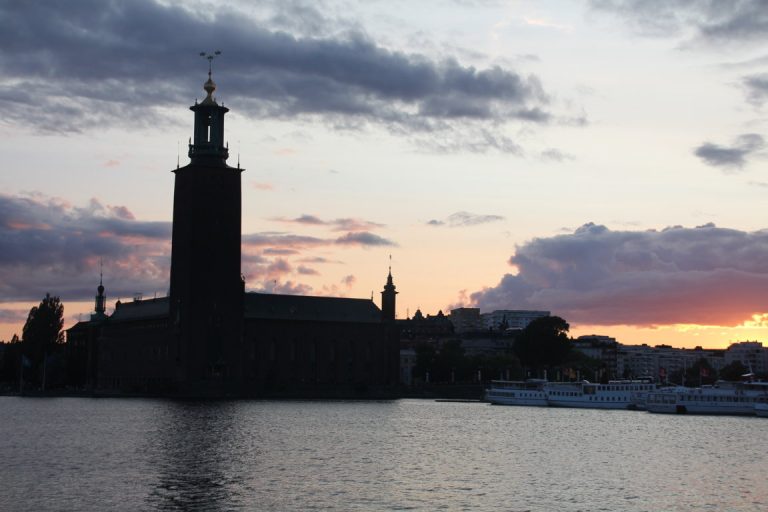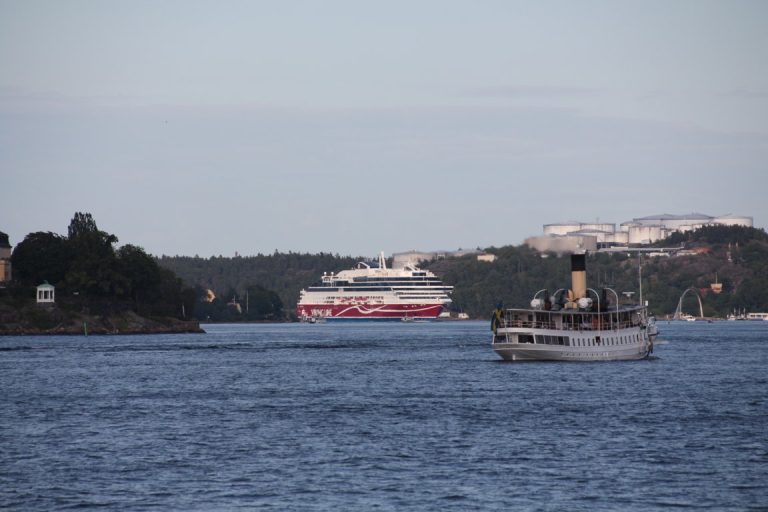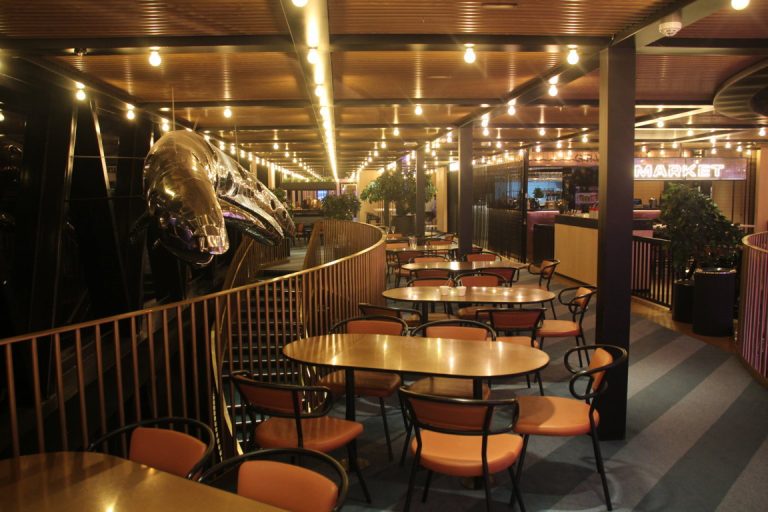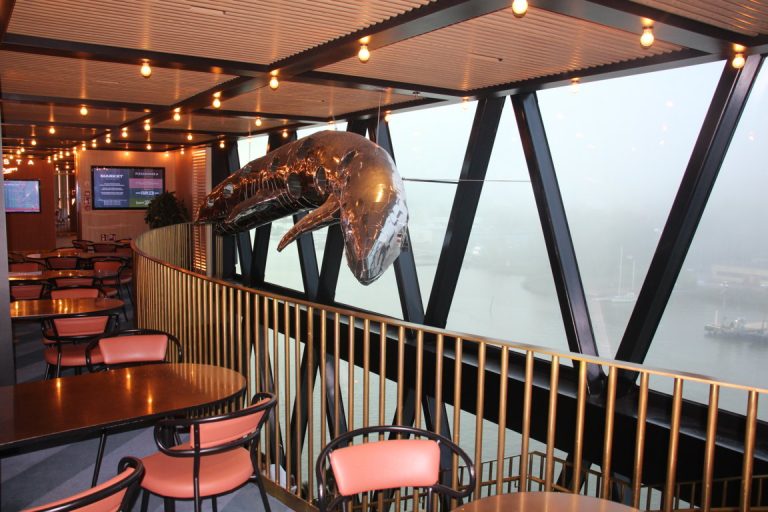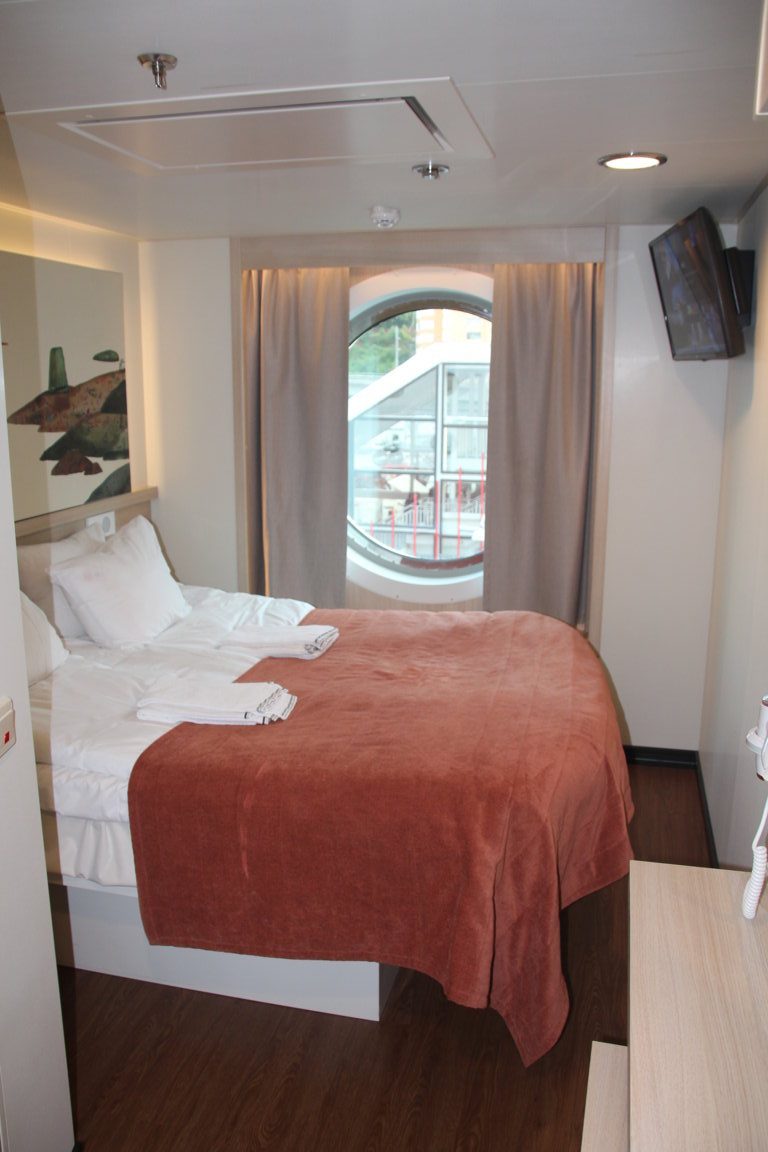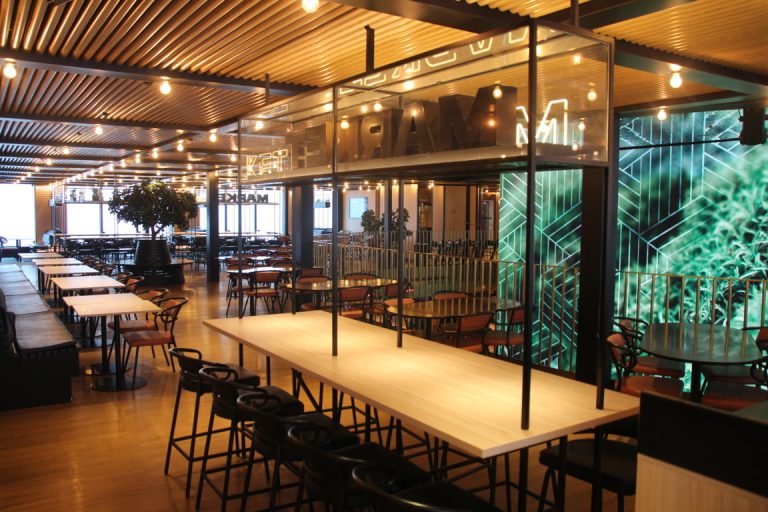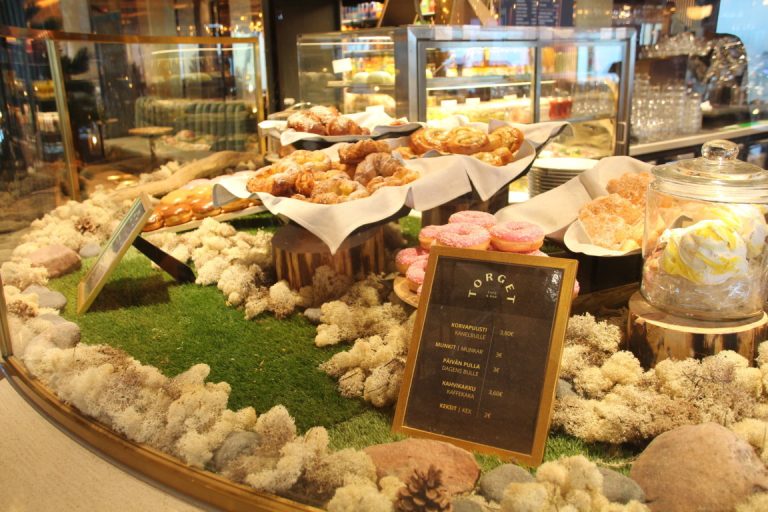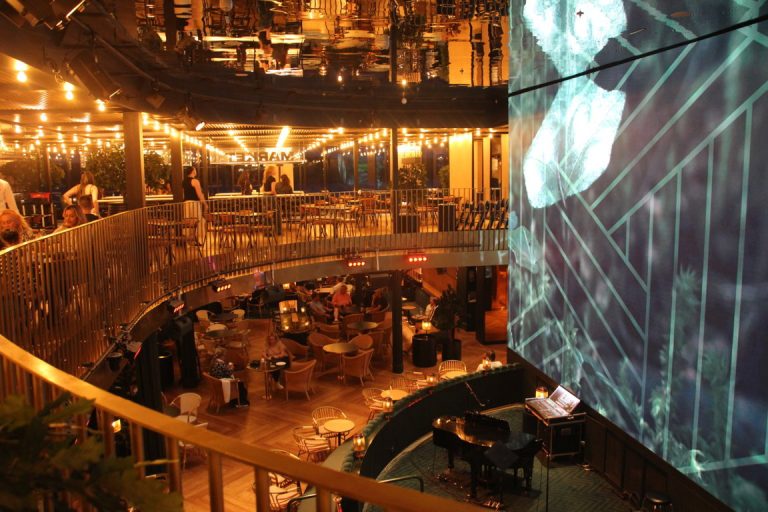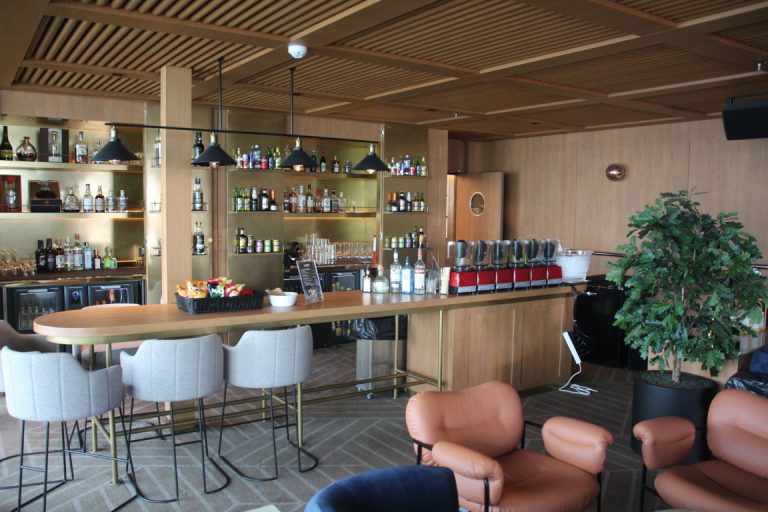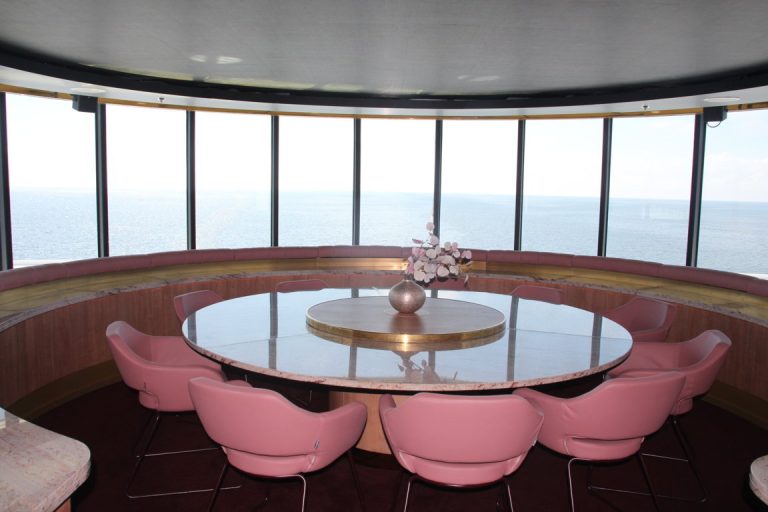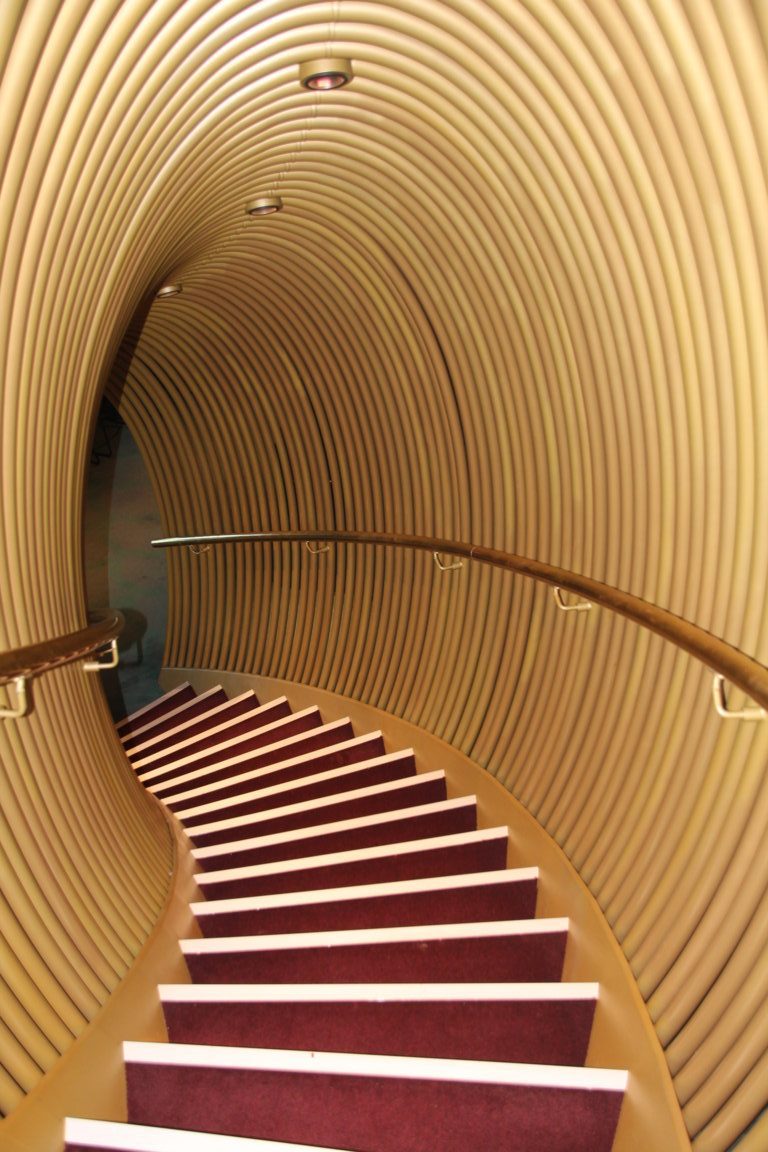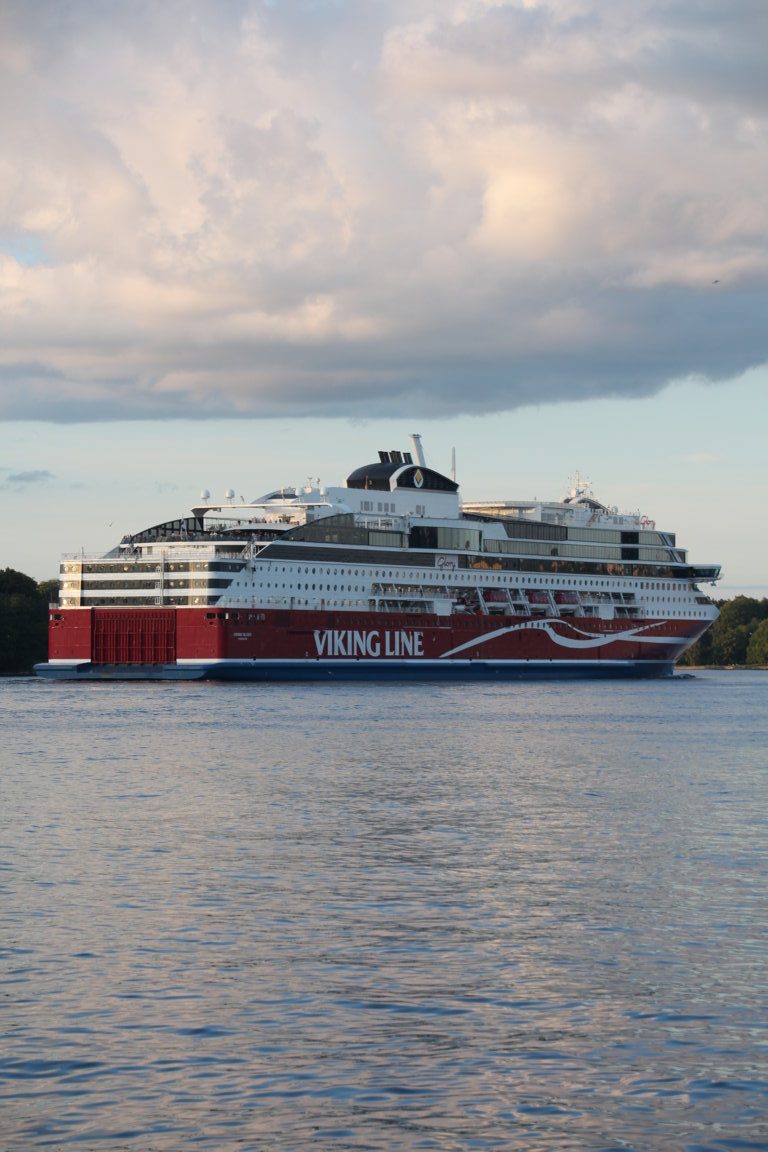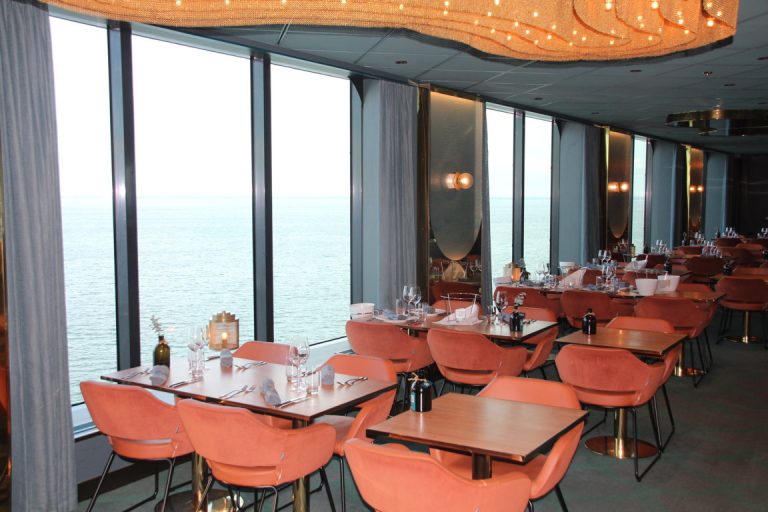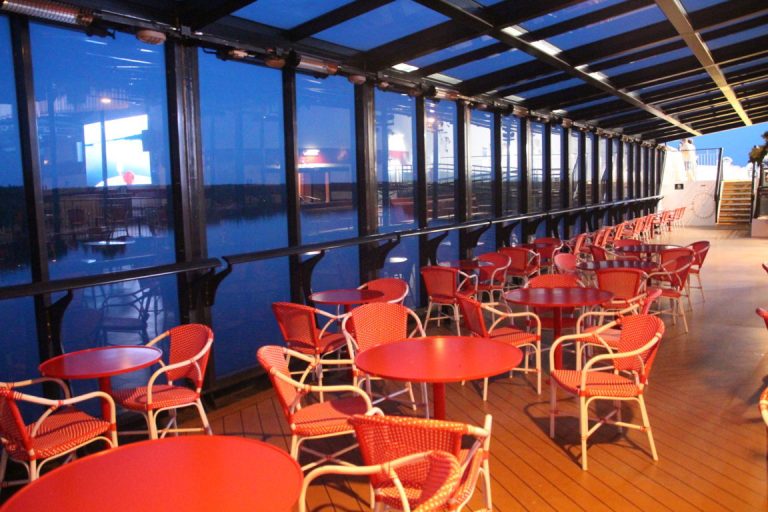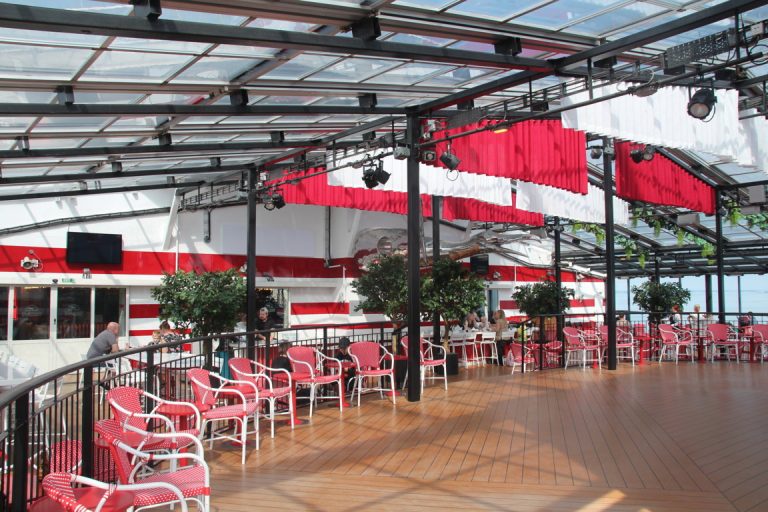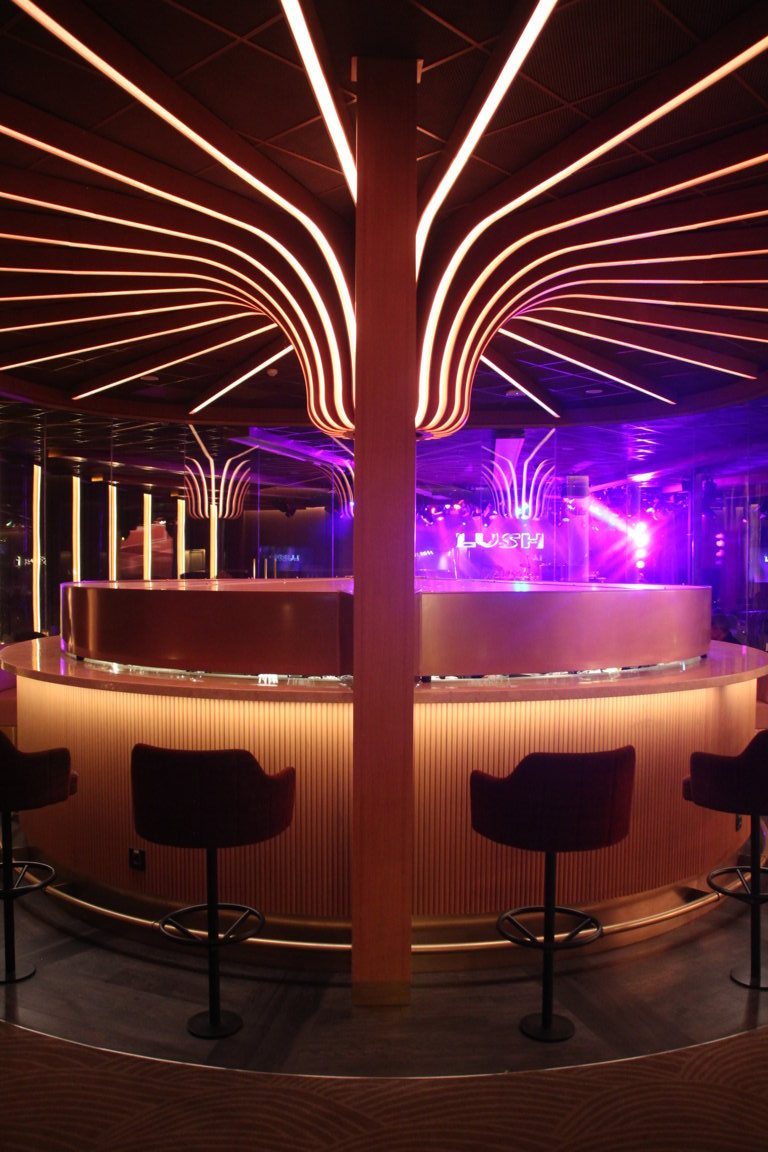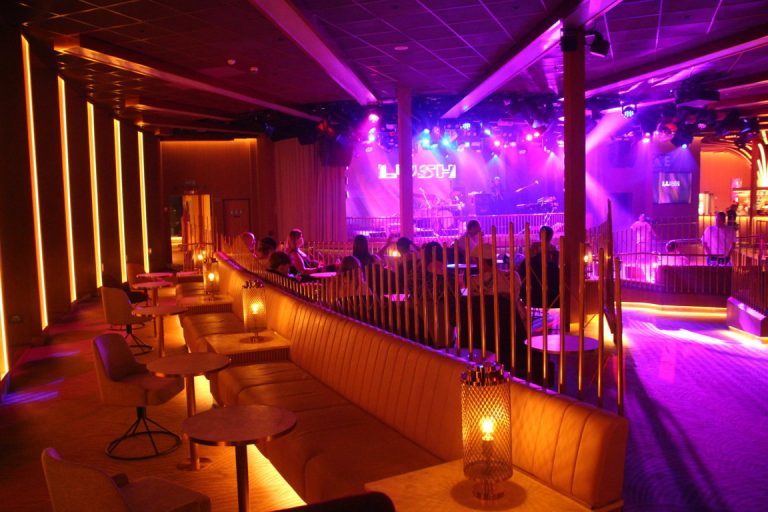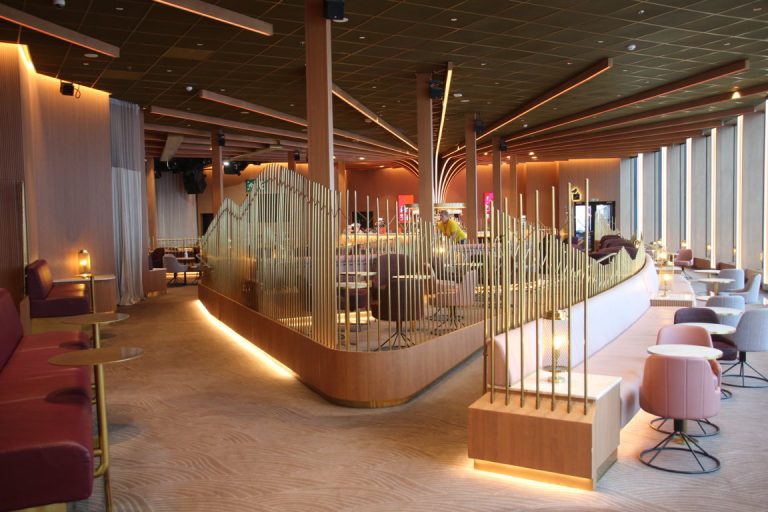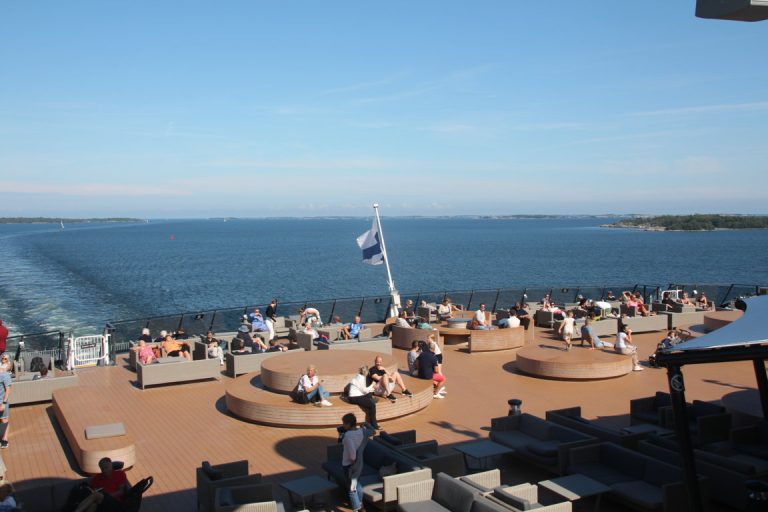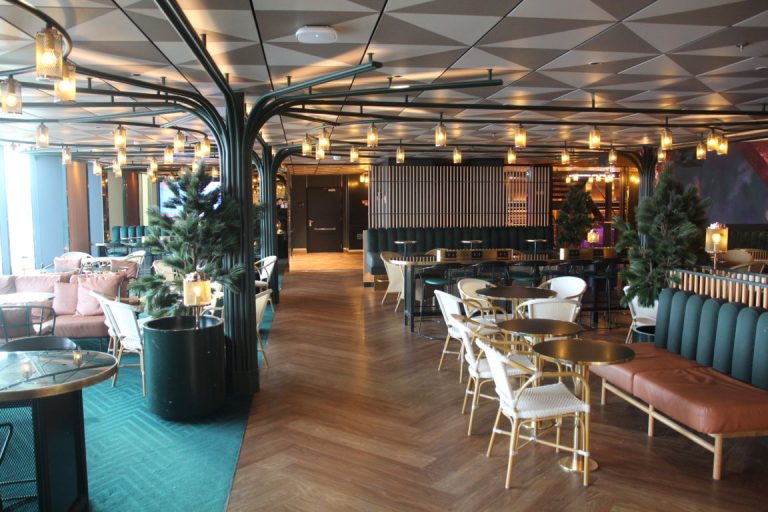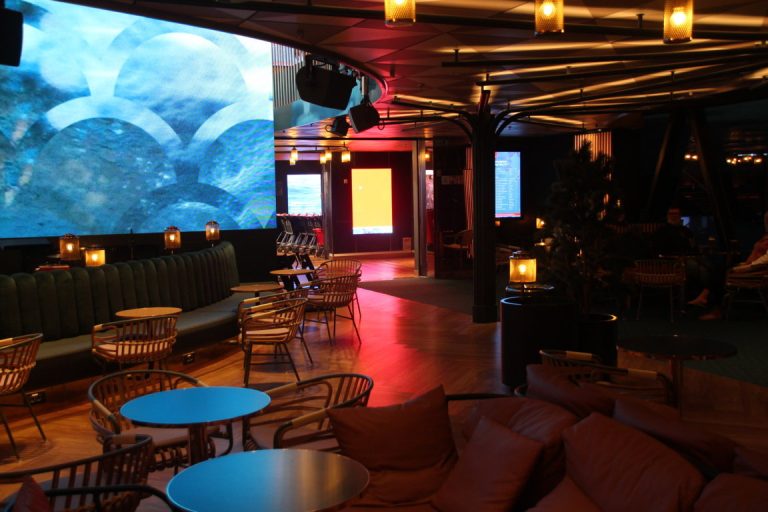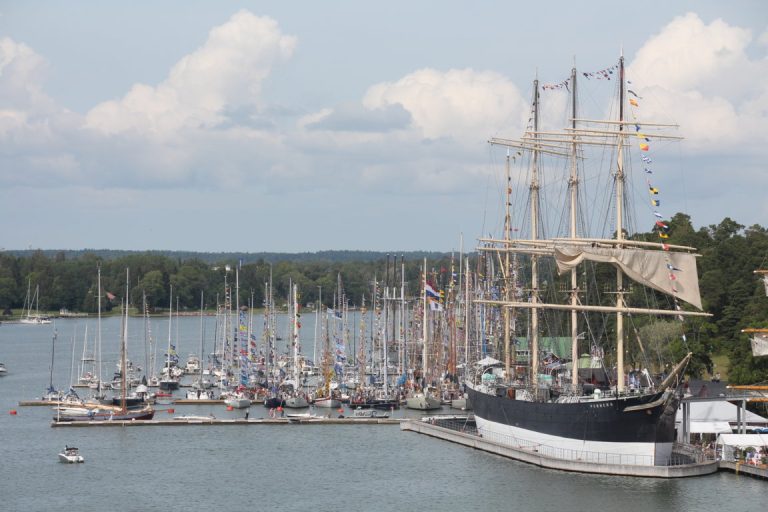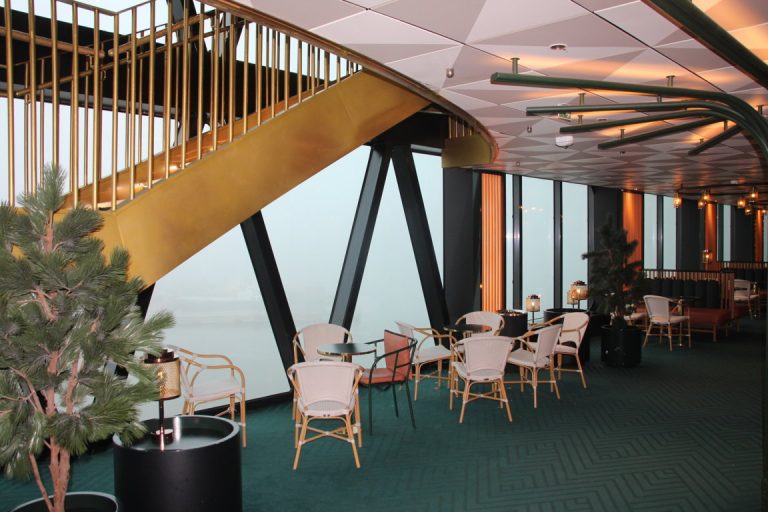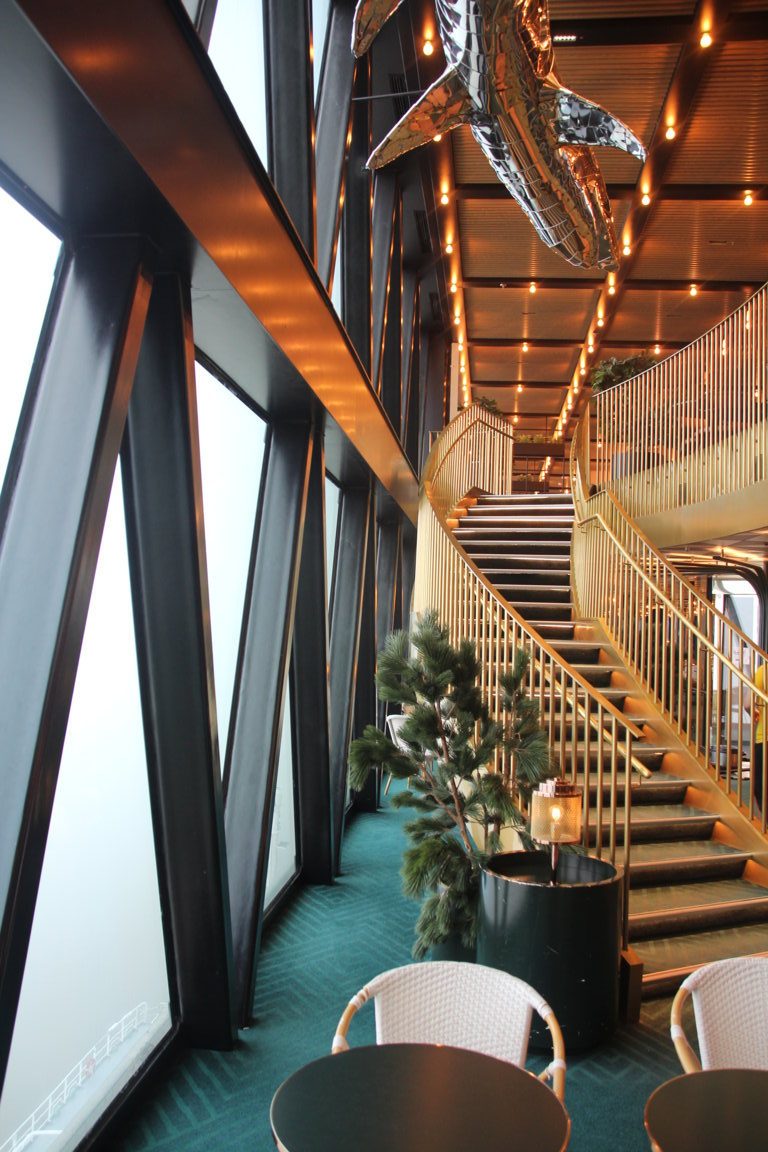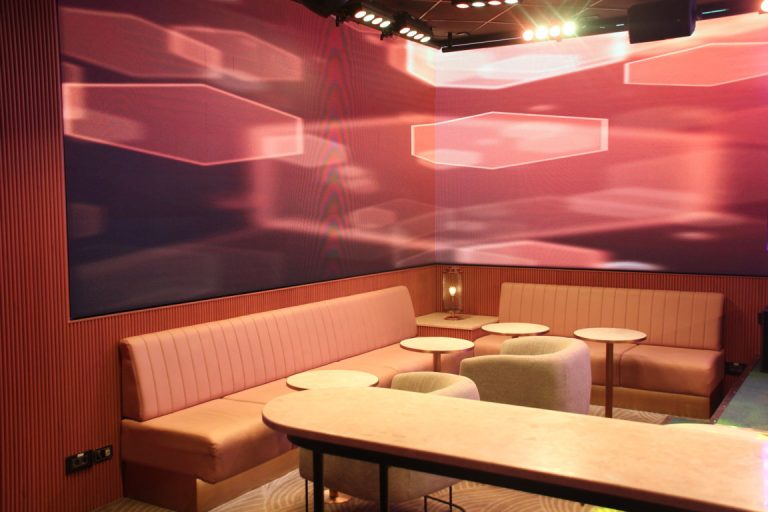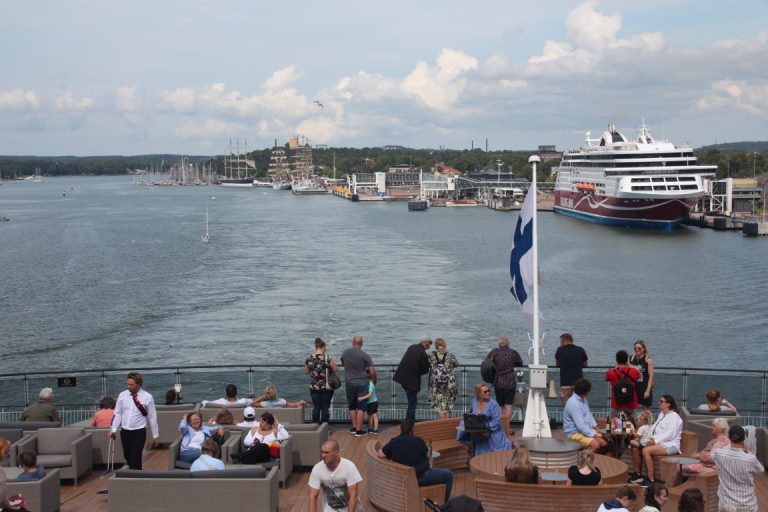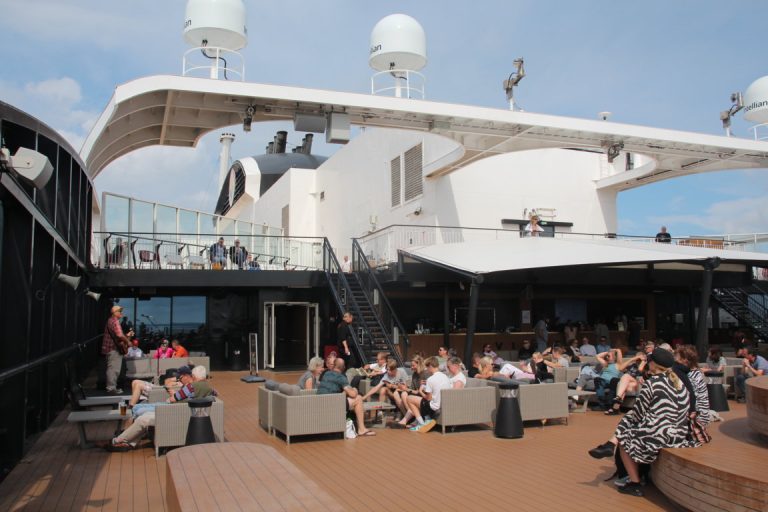Viking Glory: A Cruise Ferry for the 21st Century
The large ferry ships of the Baltic Sea meet the highest standards, often turning crossings into mini-cruises. Viking Glory, by Viking Line, is the largest and most modern among them.
The shipping company describes it as “one of the most eco-friendly ships in the world” and promises “a world-class experience.” The specialized press calls it “the ultimate cruise ferry” (ShipPax) or “a ferry that amazes” (Ferries). Viking Glory is considered the largest and perhaps the most captivating ferry in the northern Baltic. Expectations were high, then, when in July 2024 I boarded Viking Line’s new flagship in Stockholm.
The conditions outside were perfect: it was a beautiful July evening, chosen for my overnight journey from Stockholm to Turku. Viking Glory arrives right on time, quickly offloading its cargo, and at 7:30 pm, boarding begins at the “Vikingterminalen” in Stockholm’s Stadsgården district. The schedule has remained the same for nearly 50 years: every evening and every morning, a Viking Line vessel departs from either the Swedish capital or the Finnish city of Turku, allowing the company to offer both day and night departures from each port. Midway, an intermediate stop is made in the Åland Islands.
Stockholm
Viking_Glory_Stockholm
The author of these lines has already traveled this route on Viking Line’s earlier ferries, the Kalypso (1993), Amorella (2006), and Isabella (2009); each time, the crossing has also felt like a small cruise. To this day, that experience remains unchanged, as the schedule includes 11-hour cruises (Stockholm – Mariehamn – Stockholm with ship change), 22-hour trips (Stockholm – Turku – Stockholm without disembarkation or ship change), and 44-hour mini cruises (Stockholm – Turku – Stockholm with disembarkation and ship change). Fundamentally, however, these ferries operate as regular service, transporting tourists with and without cars, as well as truck drivers whose cargo travels in the ships’ holds. Thus, Viking Glory must function as a cargo ferry, a day and night ferry, and a cruise ship—a complex challenge.
Yet, all involved have embraced this concept, starting with the customs officer at the Stockholm terminal who, after checking my passport, wished me a pleasant journey in German. A welcomed detail, especially in an era where crossing the German border can make one feel like a hardened criminal. It didn’t matter that Viking Glory left the Swedish capital 15 minutes behind schedule. In summer, such delays can happen, and any lost time is easily made up overnight.
Swedish Touch
Speaking of the night: it’s worth noting that anyone experiencing Viking Glory on a single trip from Sweden to Finland will only get a partial taste of what the ship has to offer. This is because arrival in Turku is scheduled for 7:35 a.m., with an additional one-hour time difference. You can either enjoy the journey on Swedish time, settling for a very short night, or set your clock to Finnish time right away, effectively losing almost an hour the night before. I chose the first option, initially enjoying a fantastic hour and a half buffet on Deck 10, which leaves nothing to be desired in terms of variety and quality. It’s easy to put together a five-course menu here, and even the usual buffet lines are non-existent: the food stations are intelligently arranged in small “islands” throughout the restaurant. Spicy sausages with potato gratin and Sprite, sole fillet in Riesling sauce with beer, steamed salmon and beef filet with white and red wine? It’s all possible, and it doesn’t taste like typical buffet food. For dessert, there’s a selection of ice cream and sorbet, chocolate and vanilla pudding, cheesecake, and streusel cake, accompanied by rosé wine; this mini-cruise to Turku already feels perfect before it’s even begun. An hour and a half flies by, especially since the large panoramic windows encourage daydreaming as the island landscape drifts by. Only when Viking Glory passes the Oskar Frederiksborg Fortress, marking halfway through the archipelago, do I reluctantly leave table 101 after such a delicious meal. Too bad it’s already nearly 10:30 p.m. (Finnish time).
Viking Glory Deck 10
Viking Glory Deck 10
Viking Grace and Viking Glory
After the new Viking Grace replaced the Isabella on overnight departures from Turku in 2013, Viking Line began designing a ship to take over from Amorella on evening departures from Stockholm. While Viking Grace was designed by Finnish design company dSign Vertti Kivi and targeted mainly at a Finnish audience, Viking Glory, a large 65,211 GT vessel, bears the hallmark of Swedish company Koncept Design. Although this firm had no prior experience designing passenger ship interiors, it skillfully tailored the new build to the tastes and preferences of Viking Line’s Swedish clientele. Many design elements emulate the maritime world, echoing waves, lighthouses, fisher lamps, or sunsets. In this way, Viking Glory is more than a worthy companion to Viking Grace, which, despite its many colorful elements, captures the stark beauty of the Finnish archipelago.
But that’s not all. Viking Glory was also designed to cater to a generational shift in passengers, who in the 21st century no longer just want to eat, drink, and shop onboard but also focus on relaxation, wellness, fitness, and high-quality, sustainable cuisine. Sustainability is also a priority for Viking Line; in fact, Viking Grace was the world’s first LNG-powered cruise ferry upon its launch in 2013. All this and more was expected to apply to its sister ship. However, Viking Glory did not turn out to be a true sister ship; too many changes had been incorporated into the plans since 2015. Ultimately, the ship became not only three and a half meters wider (35.60 m compared to 31.80 m), allowing for more space on the car decks, but it also discreetly houses its LNG tanks within the hull, creating new possibilities for exterior design. Last but not least, Viking Glory is powered by Azipods instead of propellers, which provide better maneuverability and quieter navigation than its older sister (which also helps save fuel; its consumption is 10% lower than Viking Grace’s). However, the well-planned layout remains: cabins are on decks 5-8, while public areas are above on decks 9-11. Here, the views of the archipelago are not only better (thanks to extra-large panoramic windows), but there are also shorter, more efficient paths from cabins to the onboard gathering spots. Public spaces, in turn, are vertically arranged: dining and relaxation are located forward, while shopping and entertainment are aft. This helps with orientation and reduces unnecessary walking around.
Viking_Glory_Cabin
Viking_Glory_Market_Restaurant
Nightlife
Returning to what’s happening onboard, the mini-cruise program is already in full swing by late afternoon—a tradition that Viking Glory has easily inherited from its popular predecessor, Amorella. Guests dining in the exclusive “Kobba” and “Fyren” restaurants have already enjoyed the soothing melodies of pianist Georgi, while the evening kicks off with the lounge trio “Tea for Three” performing at Torget, before the onboard band “Lush” takes the stage in the Vista Room at 10:00 p.m. (Swedish time). Speaking of Torget (“market”), the name is fitting: spanning two decks at the ship’s center, it features a range of cafés and lounges, all surrounding the lower-level stage (Deck 9). Like the “Theatrium” on Aida cruise ships, guests can choose to stay and watch the performance and music, or simply stroll around and enjoy a snack or drink.
Viking_Glory_Torget
Viking_Glory_Torget
The Vista Room, on the other hand, is a modern interpretation of the classic nightclub, with intriguing innovations. It offers exceptionally spacious surroundings for a ferry, with a height of one and a half floors, while bars, lounges, and seating areas are so discreetly separated that they feel like distinct spaces, without losing sight of the stage. When the band plays Bryan Adams’ classic “Summer of ’69,” you might wonder where all the passengers have gone, who had crowded the terminal two and a half hours earlier. Meanwhile, the troubadour in “Algoth’s,” a cozy lounge aft on Deck 10, performs for a small audience after sunset. The lounge’s name is inspired by Algoth Niska, a Finnish national footballer who became a national hero thanks to his double role as a whiskey smuggler and resistance fighter during World War II—a career that could likely only come to life in Finland.
The last item on the day’s program is the DJ, who entertains the boldest night owls in the Vista Room from 11:45 p.m. onwards, before Viking Glory heads quietly toward its destination for a few hours. However, at 2:15 a.m. (3:15 local time), Viking Glory makes a brief stop at Långnäs in the Åland Islands, where passengers can board and disembark, and cargo is unloaded and new cargo is loaded. A ferry never sleeps.
Viking_Glory_Algoths_Bar
Viking_Glory_Fyren_Restaurant
Viking_Glory_Fyren_Restaurant
Turku and Back
When Viking Glory arrives in Turku the next morning, just after half-past seven, the harbor and city are shrouded in a dense fog. The historic 13th-century fortress is visible only as a faint outline, and only the activity on the dock and in the terminal can be observed from the ship. Ferry passengers must disembark quickly, as within an hour the cargo must be fully unloaded and 2,500 new guests boarded through the terminal. This might seem impossible, but thanks to three double-deck gangways connecting two of Viking Glory’s decks, it’s a well-practiced operation. Meanwhile, the Seagas, a tanker, approaches on the ferry’s port side to refuel Viking Glory with LNG for upcoming journeys. A full tank lasts for three crossings, after which the tanker will be needed again. Viking Glory’s powerful 33,000 kW engine is also compatible with diesel, biodiesel, and methanol. This is known as “multi-fuel ready” in technical terms—a sustainable approach, though all natural and synthetic alternatives to conventional diesel are still considerably more expensive. Even the “Green Week” initiative launched by the company in September didn’t change much: during this period, Viking Grace and Viking Glory ran temporarily on LNG, reducing CO₂ emissions by a further 90%. However, due to the high costs, most shipping companies have resorted to such alternatives only with great difficulty, though they can quickly adjust to market price fluctuations by changing fuel type.
Viking Glory departs Turku punctually at 8:45. The morning fog lingers as the ship begins its journey through the archipelago. Only when Viking Glory nears open waters does the fog lift, finally revealing the view of the narrow straits of the South Finland archipelago. However, regular passengers on this route may find themselves missing a familiar sight that has been part of the landscape for decades: the competing ferry of Silja Line. Silja Line ferries followed Viking Line ships (or preceded them) along this route for nearly 60 years, with both companies offering similar schedules and fares across different generations of ships. Only when passenger numbers plummeted due to COVID-19 and lucrative charter opportunities emerged for large overnight ferries—suddenly repurposed as accommodation for refugees amid the Ukraine crisis—did the situation change. The Silja Line Galaxy, which typically operated almost in parallel with Viking Glory’s predecessor Amorella, left the route in 2022, leaving the red-hulled competitor as the virtually unrivaled morning service from Turku. Meanwhile, we hear onboard that Finnlines, operating from the nearby port of Naantali to Kapellskär, has recently introduced two new vessels, Finncanopus and Finnsirius, whose amenities can now compete with those of the Galaxy and Viking Glory.
Viking Glory
Luxury Ferry
Most passengers use the start of the eleven-hour crossing to Stockholm to enjoy a hearty breakfast at the buffet restaurant. However, only a few have the privilege of dining at “Kobba.” Located on deck 11, this “bistro restaurant with a casual menu” is the counterpart to the elegant “Oscar’s” on Viking Grace: an intimate dining spot offering a “premium breakfast” each morning, complete with champagne and live piano music. The dishes are exquisite, with the fresh berry compote as the perfect finishing touch. Dining like royalty in France? Rather, like a mini-cruise passenger in Finland. The premium breakfast is priced at €23, while a four-course menu in the same venue costs €49.
Meanwhile, a standard breakfast in the buffet restaurant costs €16, with lunch priced at €28.50 and the lavish dinner buffet at €41. Viking Line ships offer excellent cuisine at any time of day, yet many customers, even in high-cost countries like Sweden and Finland, feel deterred by these prices. (At the Viking Terrace, for instance, a Caesar salad costs €15, a burger €20, while a Margherita pizza below deck and traditional Swedish meatballs with mashed potatoes are both €16.) Mini-cruises are no longer quite the bargain they once were, so it’s unsurprising that ferry companies are finding it challenging, especially in the low season, to fill their large, luxurious ferries.
Viking_Glory_Kobba_Restaurant
Viking_Glory_Viking_Terrace
Viking_Glory_Viking_Terrace
Silja Line’s Baltic Princess (currently operating for her owner only between Stockholm and Turku) has the same maximum capacity as Viking Glory—2,800 passengers—yet the latter, even today at the peak of high season, carries “only” 2,000 guests on board. There’s room for growth. At least this undercapacity adds to Viking Glory’s enjoyment during its daytime crossing from Turku to Stockholm. On the overnight crossing from Sweden to Finland, passengers only get a fleeting impression of the ship due to the time zone change; however, it’s the opposite on the return journey. Here, passengers gain an hour and can enjoy the entire trip in daylight.
Those setting off in the evening on Viking Grace from Turku can expect a party atmosphere with vibrant nightlife, while Viking Glory offers a more relaxed environment, as we’re assured onboard. For instance, the “Vista” Night Club on this ship is designed to serve also as a “Day Club,” a cozy lounge where travelers can spend their time elegantly as they pass through the archipelago, accompanied by soft music. Despite over 900 passenger cabins divided into 23 categories (including the 62 m² Sunset Suite with a private jacuzzi and separate living and sleeping areas), Viking Glory thus also serves as a “luxury” daytime ferry. Moreover, the bars and lounges onboard have been designed so that they can be closed off without passengers noticing, allowing great flexibility. This combination of function and versatility enables Viking Glory to carry significantly more passengers than Amorella with the same crew size—an essential element for ensuring operational profitability.
Viking_Glory_Vista_Club
Viking_Glory_Vista_Club
Viking_Glory_Vista_Club
A Mini-Cruise for Every Taste
An hour and a half after departure, once most passengers have finished breakfast, the “official” onboard cruise program begins. “Ville Viking,” the red-and-white-striped mascot for kids, welcomes young passengers to a party in the Vista Room, while the “Tea for Three” trio performs again on the Torget stage. As the summer sun clears away the morning mist, attention shifts to the outdoor decks—a clear advantage Viking Glory has over Viking Grace. The newer ship not only features the large sun deck mentioned earlier at the stern and a beautiful, spacious promenade on both sides of the ship on Deck 7, but also the “Viking Terrace.” Described by the cruise line as a “summer oasis,” it combines the functions of an open-air cocktail bar and a fast-food restaurant. Open from early morning until late at night and decorated in Viking Line’s red and white (giving it a bit of a pizzeria vibe), DJs and musicians perform here in the evenings, and thanks to a retractable glass roof, the terrace can double as a winter garden. During Advent, with its wind protection and outdoor heating, it even transforms into a Christmas market on the open sea. Located midship on Deck 11, just in front of and below the funnel, this typically overlooked space onboard is cleverly used.
Viking_Glory_Sonnendeck
Viking_Glory_Torget_Bar
Viking_Glory_Torget_Cafe
Still, on this sunny morning, as the distances between the islands gradually widen, most passengers gather at the stern, primarily due to “Uncle John.” Uncle John is the classic troubadour, who, with simple attire and brief announcements, delivers a seemingly endless repertoire of country and western songs with his guitar, making time fly during the first part of the voyage. The islands suddenly become just a backdrop, and Viking Glory feels less like the cruise ship where passengers recently enjoyed champagne at breakfast, and more like a slice of Route 66 in the middle of the Baltic Sea—complete with beer and fresh sea air.
Meanwhile, kids are in the capable hands of Ville Viking and his team: during the summer months, the entire conference area on Deck 9, at the bow, is transformed into “Adventure Island” for children and teens. One conference room is devoted to Lego-building, another to foosball, and across the hall, animated movies are shown. Were it not for the lively buzz in the early afternoon as Viking Glory makes a stop at Mariehamn in the Åland Islands—where from 2:10 to 2:25 p.m. many passengers disembark, others board, and even the troubadour takes a break—one could easily lounge on deck, enjoying the voyage until arrival in Stockholm.
Mariehamn
Viking Glory Deck 9
Viking Glory Deck 9
A Visit to the Captain
Captain Ulf Lindroos, who personally piloted Viking Glory from the Xiamen Shipbuilding (XSI) shipyard in China to Europe, knows the ship better than anyone else. We meet him on the bridge during the voyage between Mariehamn and the beginning of the Stockholm archipelago. He shares stories about the ship’s construction, which cost €200 million and presented numerous challenges. For one, Viking Line had never before awarded a contract for a new build to a Far East shipyard, let alone one with no prior experience building passenger vessels—a particularly complex branch of shipbuilding. Additionally, Viking Line insisted on Scandinavian or European components, requiring special shipments. Then, in early 2020, the COVID-19 pandemic struck, disrupting supply chains and normal workflows. Not surprisingly, the ship, ordered at the end of 2016 and initially scheduled for delivery in 2020, only began service at the end of March 2022. Fortunately, the pandemic was largely over by then, so Viking Glory could immediately benefit from the rebound in international tourism following COVID.
With some visual nods to the Helsinki-Tallinn ferry Viking XPRS, Viking Glory has achieved a similar level of success as her older sister, Viking Grace, which quickly earned the status of “new kid in town” in its early days. However, standing still means falling behind, which is why Viking Glory continually assesses what works and what doesn’t. For example, the Vista Cocktail Lounge, a slightly secluded extension of the Vista Room, will soon be converted into a full pub to generate additional revenue. Additionally, both Viking Grace and Viking Glory will be outfitted with battery systems to save even more fuel, although this will likely happen in 2026, Captain Lindroos explains.
Viking_Glory_Vista_Lounge
The Archipelago by Day
After getting a sleepy or dimly lit glimpse of the Stockholm archipelago (aptly named “Skärgård,” or “garden of islands” in Swedish) on the outbound journey, passengers on the return voyage to Stockholm can fully enjoy it in daylight. The trip from Kapellskär to Stockholm lasts four and a half hours, during which Viking Glory makes numerous turns, disappears behind both large and small islands, lets ferries and cruise ships pass in the opposite direction, or glides slowly past cliffs and islets. If you’re a fan of iconic red Swedish wooden cottages or never tire of spotting secluded coves, abandoned docks, and swans, this won’t be your only trip on one of the cruise ferries between Sweden and Finland. Each island is a miniature idyll, and every moment spent on deck is balm for body and soul. Add the comfortable deck chairs on the sun deck, complete with cushions, and the wooden seating islands that light up at night, and you’ll hardly need the luxury of Viking Glory’s interiors. The ship’s ten restaurants and bars, for example, range from the large buffet restaurant to “Fyren” with its revolving table; the wellness center with adjoining fitness area offers Baltic Sea views from the pool, hot tub, or massage bed; and finally, the massive onboard shop features a variety of products still available tax-free thanks to the special tax status of the Åland Islands.
Viking_Glory_Sonnendeck_und_Viking_Grace
Viking_Glory_Sonnendeck
If you’re traveling on Viking Glory from Turku to Stockholm in the summer, you’re likely to remember the relaxed atmosphere on the sun deck most of all. From the “DJ on stage,” who sets the mood under the Scandinavian sun during the second half of the trip before handing off to the troubadour, to the magnificent Vista Room, where a band performs even during the day (a rarity for a club of this kind), and Adventure Island, where your children enjoy treasure hunts (“Quiz Walk”), games, and competitions of all kinds. In the end, just over eleven hours is barely enough time to fully experience Viking Glory and all its amenities and facets. Is it truly “the ultimate cruise ferry”? I’d have to say yes.
Stay updated on cruise news, updates, and reviews on Cruising Journal with photos, videos, and cruise deals.

